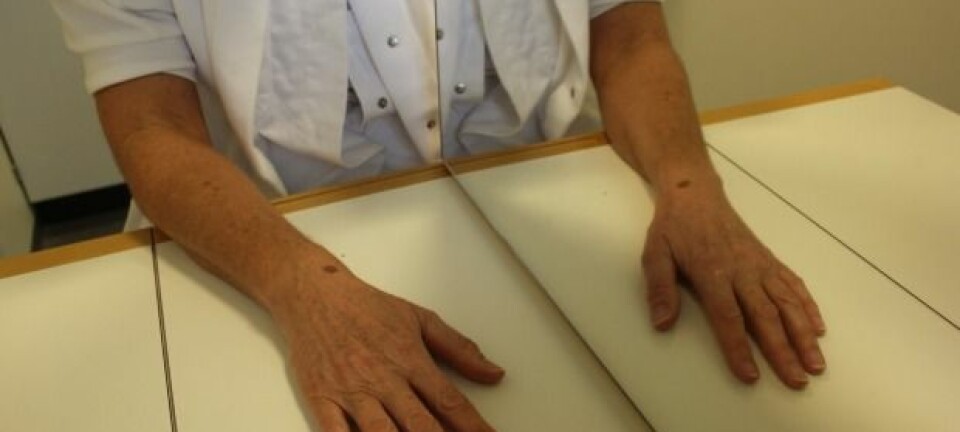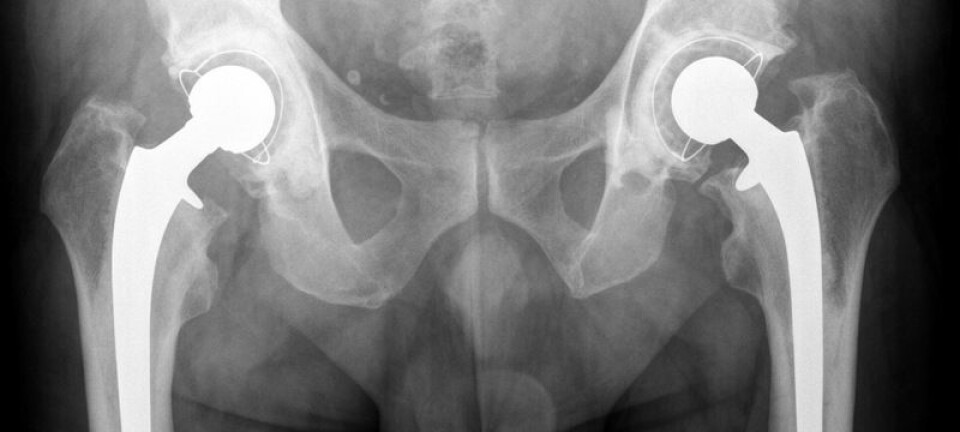Hand prosthesis with a sense of touch
A new hand prosthesis enables an amputee to feel a handshake for the first time in years. A quantum leap in prosthesis research, says scientist.
Scientists have created a hand prosthesis that not only receives and responds to brain signals, but also sends information back to the brain.
This means, for instance, that that the artificial hand can feel pressure and can tell the amputee, via the nerve endings, that he is holding something in his hands.
The prosthesis also enables the amputee to feel that a coffee mug becomes heavier when coffee is being poured into it, and the amputee can even feel differences in texture and shape.
According to the Danish contributor to the new invention, Associate Professor Winnie Jensen of the Center for Sensory-Motor Interaction at Aalborg University, the new prosthesis represents a major breakthrough:
It is pretty unique that we have now turned communication between prosthesis and person into bi-directional communication. It will lead to a quantum leap in the quality of the type of prostheses we can offer amputees.
”It is pretty unique that we have now turned communication between prosthesis and person into bi-directional communication. It will lead to a quantum leap in the quality of the type of prostheses we can offer amputees.”
Jensen was the project coordinator of the part of the project that developed the implantable electrodes.
The prosthesis, which was tested on Danish amputee Dennis Aabo Sørensen, is presented in the journal Science Translational Medicine.
The problem with prostheses
Up to now, prosthesis development has focused on getting the prostheses to respond to the body’s signals. An example of this would be a hand prosthesis that opens and shuts in response to contractions of the forearm.
We selected some nerve fibres that prompted some specific feelings in the patient’s missing hand. When we attached these nerve fibres to small electrodes that were connected to the artificial hand, the amputee could feel his hand for the first time in ten years
The problem with prostheses has always been that the amputee has been unable to feel e.g. the strength of a handshake, which makes it impossible to determine how much force is required to grasp and open a jam jar or to grasp something as fragile as an egg.
In order to perform a long series of movements with the hands it is therefore necessary not only to send information from the brain to the hand; the information must also be sent back to the brain.
Prosthesis connected directly to nerves
To solve this problem, the international research team connected the hand prosthesis to nerve fibres in the amputee’s forearm.
This meant that when the individual nerve fibres in the forearm were stimulated with an electric pulse, the amputee could feel it with the artificial hand.
The researchers examined the thousands of nerve fibres in Mr Sørensen’s forearm to identify the ones that gave the desired feeling – e.g. pressure or texture.
”We selected some nerve fibres that prompted some specific feelings in the patient’s missing hand. When we attached these nerve fibres to small electrodes that were connected to the artificial hand, the amputee could feel his hand for the first time in ten years,” says Jensen.
In the above video, you can hear how it felt for Mr Sørensen when he tried the new prosthesis.
On the market in five to ten years
The new artificial hand is the first step towards improved prostheses, but as the video shows, there is still some work to do in terms of appearance and various technical subtleties.
The researchers also need to figure out a way to extend the period in which the patient can have the electrodes implanted in his arm.
Mr Sørensen only had the electrodes implanted in his arm for a month, as the researchers need to examine the long-term effects of the implanted electrodes before they can turn it into a permanent solution.
Jensen therefore expects that it will take some time before the new prosthesis will be available to the public:
”There are limits to how much we’re allowed to experiment with implanted electrodes. So far, Dennis has had the electrodes in his arm for 30 days. This period needs to be extended dramatically before the prostheses can hit the market. I reckon it will take about five to ten years.”
---------------------
Read the Danish version of this article at videnskab.dk










